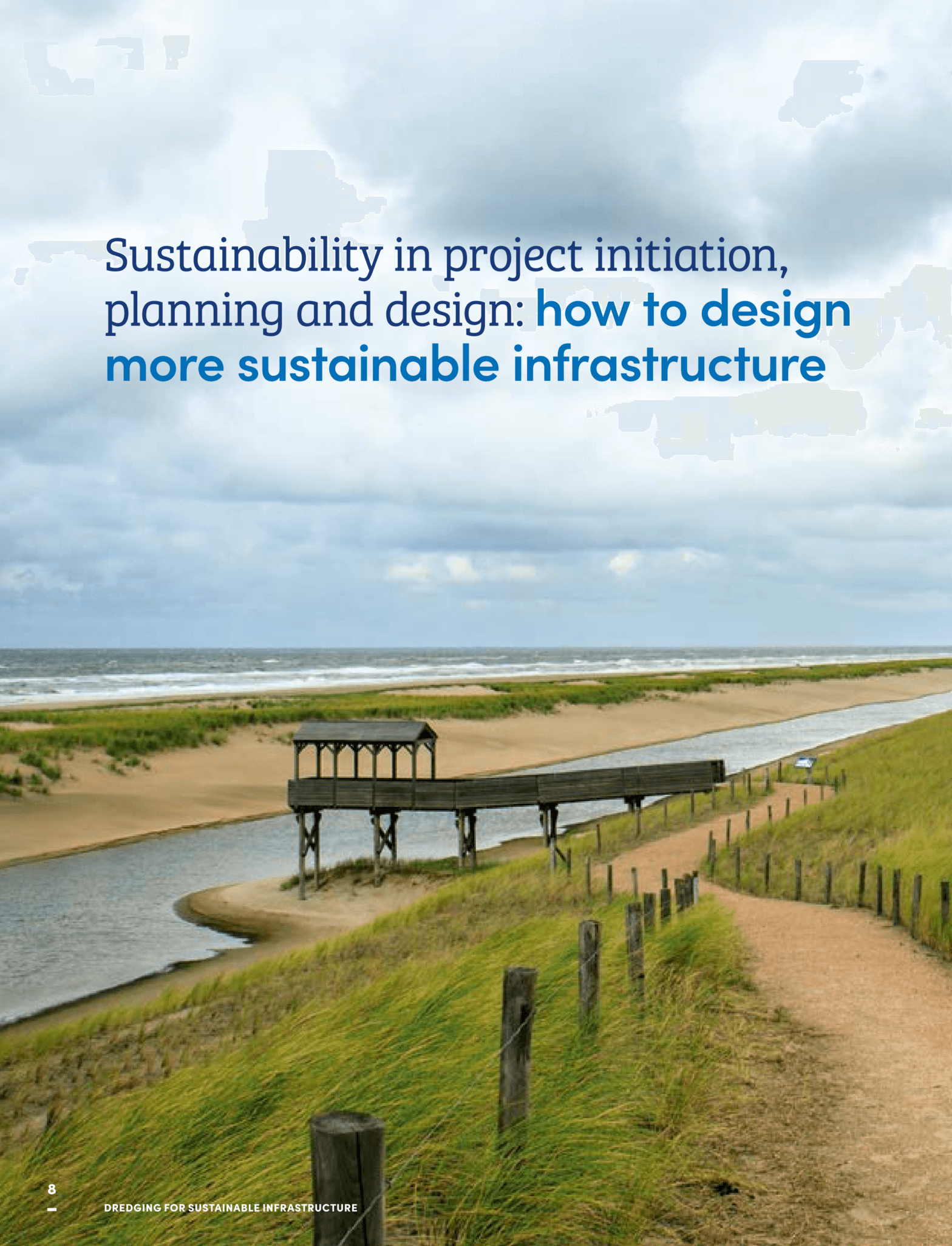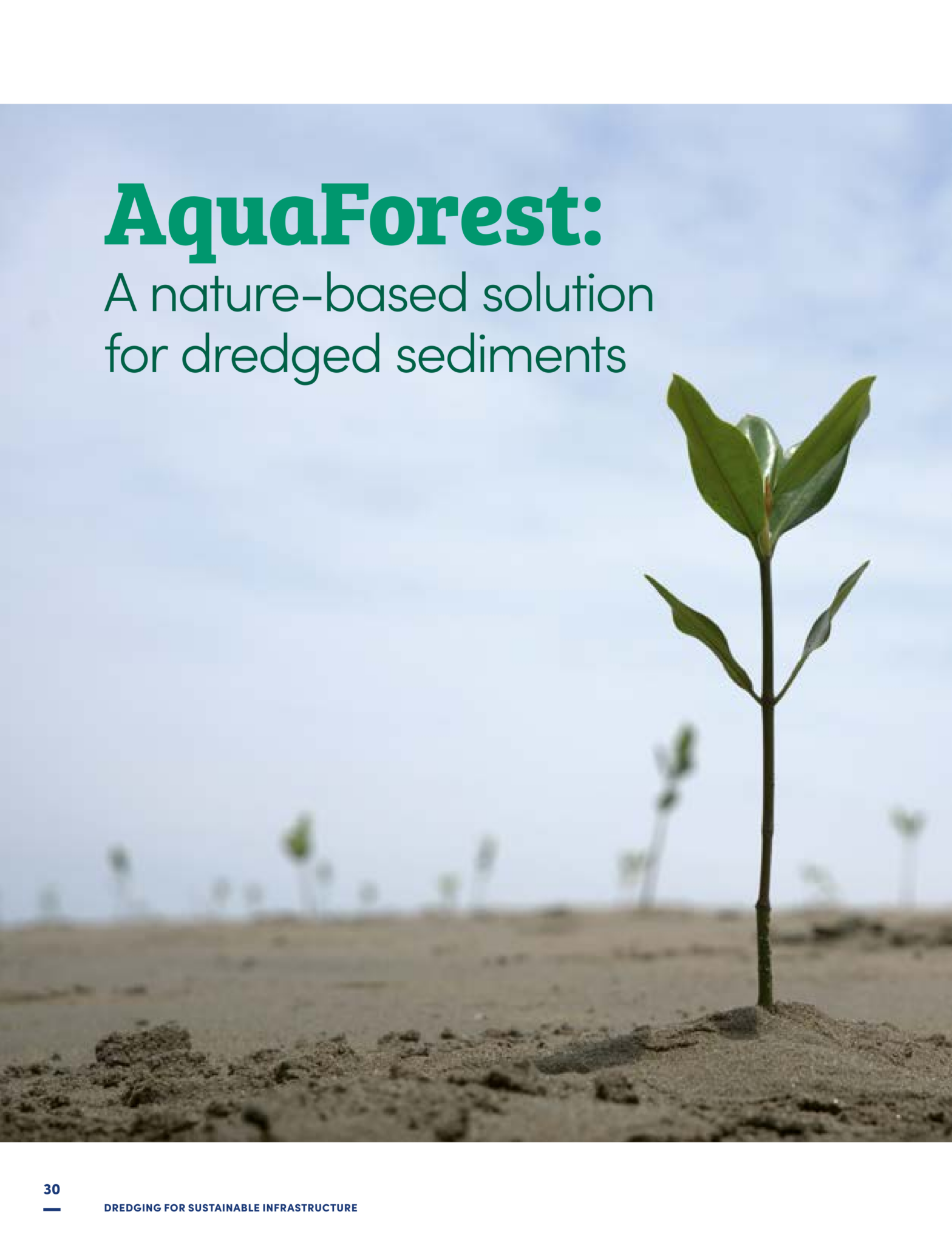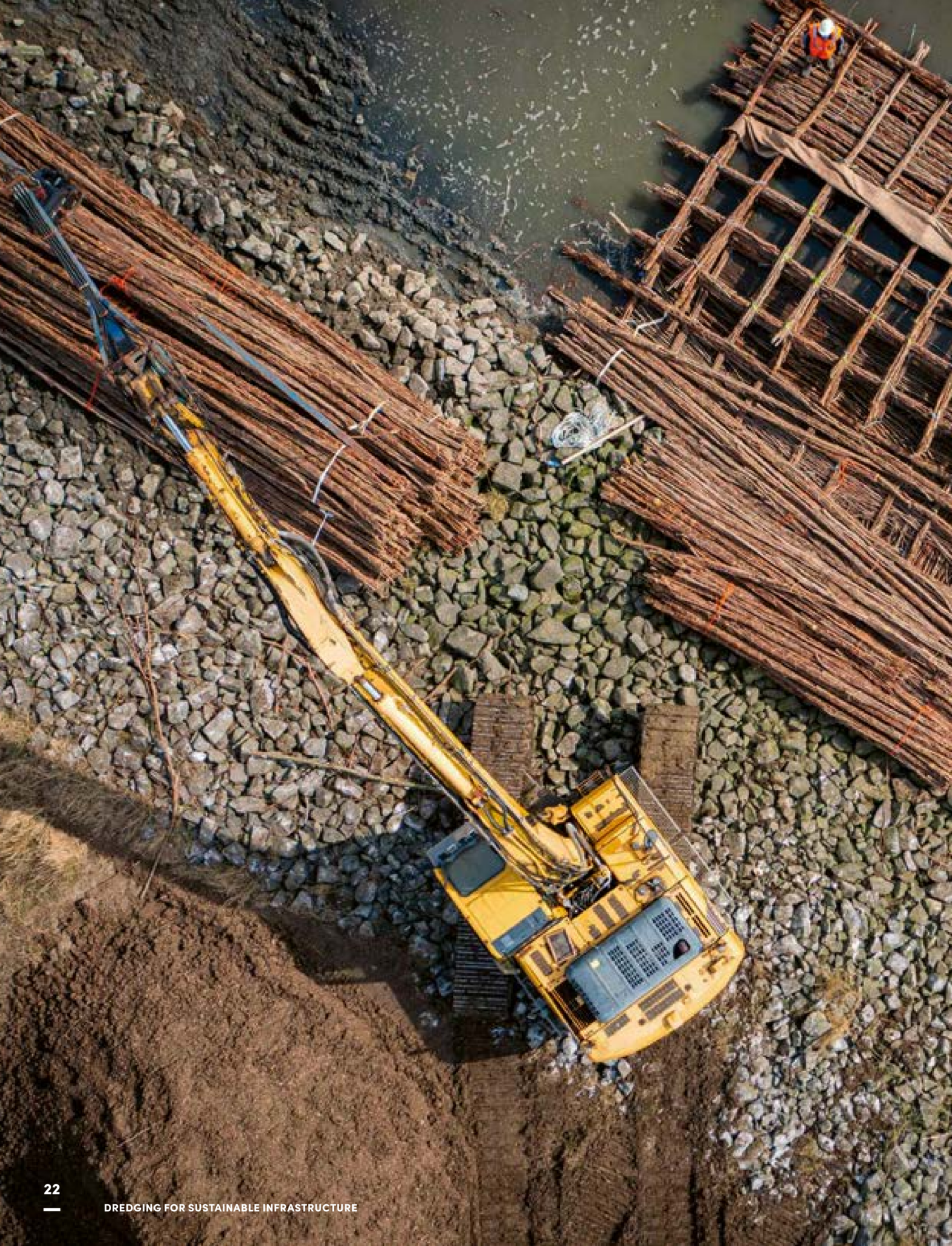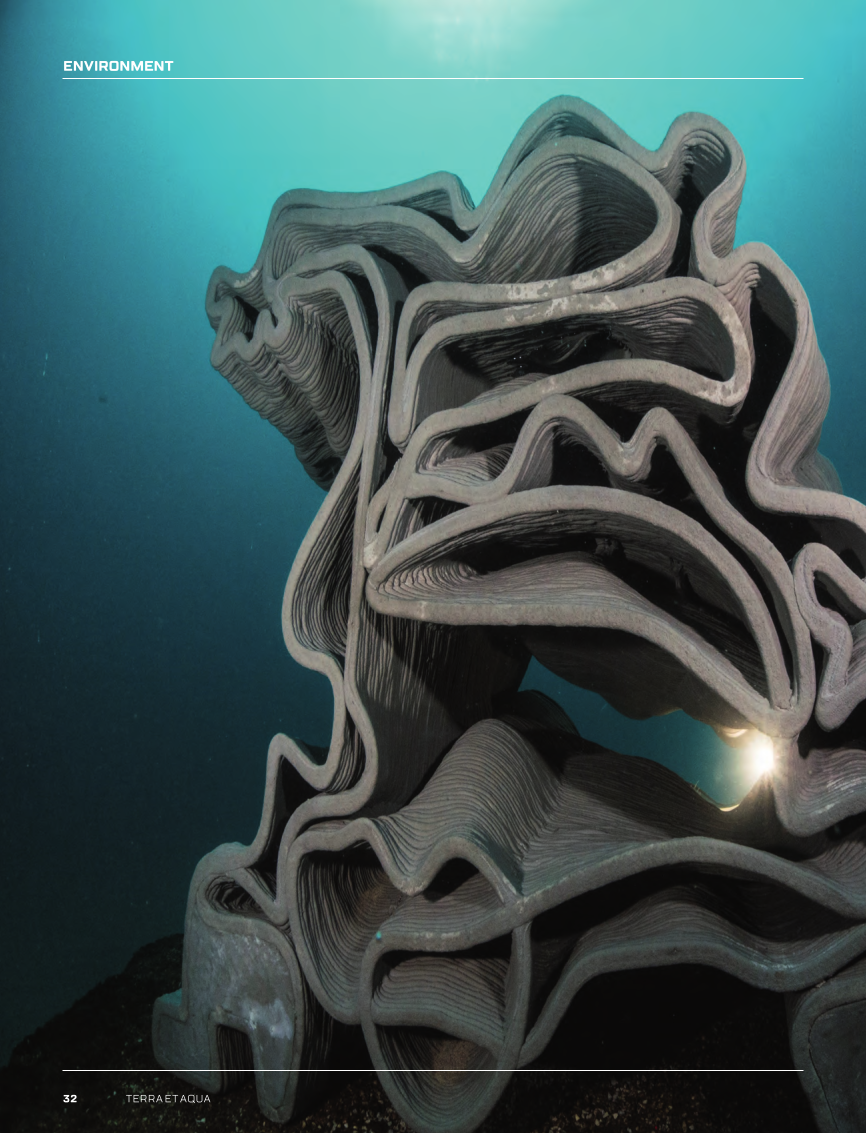
Sustainability in project initiation, planning and design: how to design more sustainable infrastructure
In the first DFSI Magazine, the concept of sustainability in relation to dredging projects was explained. How to integrate this concept in project design is the focus of this article, adapted from the third chapter of Dredging for Sustainable Infrastructure (2018), and provides the theme for this issue.

AquaForest: A nature-based solution for dredged sediments
AquaForest is a demonstration project led by Jan De Nul showcasing a green-grey approach, where dredged sediments are being reused to create 50 hectares of mangrove habitat in the Guayas Delta, Ecuador. The project aimed to advance knowledge on the conceptual design and eco-engineering approaches of mangrove habitats, while strengthening local engagement and generating diversified income opportunities for local communities. A new mangrove island was built in the end of 2024 and is currently being monitored to quantify the provision of ecosystem services over time with the aim of future upscaling of this type of nature-based solutions.

RESTORING OYSTER REEFS with nature inclusive marine infrastructure
While essential to coastal development and maritime industries, dredging and marine construction activities can unintentionally disrupt marine ecosystems. At Van Oord, we aim to deliver solutions for marine infrastructural developments that protect and enhance habitats and biodiversity. Over the past few years, we have explored how nature-inclusive designs can transform traditional marine infrastructure into ecosystem-supporting assets. The reintroduction of the European flat oyster to the North Sea is a key example.

TALKING HEADS
Alex Hekman, NL2120 and René Vrugt, Ministry of Infrastructure and Water Management discuss the necessity for a complete approach aimed at sustainable and climate-proof use of land and water systems.

Bankbusters: Ecosystem-based riverbank management
Estuarine tidal wetlands offer vital ecosystem services, including flood protection, erosion control and water purification. However, these estuarine ecosystems actually face significant pressures caused by both human activities and natural forces, leading to habitat and ecosystem degradation and loss. The Bankbusters project adressess these issues by reusing soft dredged sediments to restore tidal marshes and mudflats as natural riverbank systems. As such, this initiative promotes biodiversity, enhances flood resilience and supports sustainable economic growth through innovative, eco-friendly and resilient solutions in the Scheldt estuary.

Registration open for a NEW ONLINE Course ‘Dredging for Sustainable Infrastructure’
IADC and CEDA organise a new online edition of the “Dredging for Sustainable Infrastructure” course on 10, 11, 16 & 18 June 2025.

Upscaling seagrass restoration with insights from seed-sediment dynamics
Seagrass restoration is increasingly recognised for its potential to enhance biodiversity and contribute to carbon sequestration. However, planting methods are largely based on manual techniques, posing challenges for upscaling and implementation as nature-based solutions (NbS) within the dredging industry. To address this, techniques to combine sediment nourishments with seed-based seagrass restoration are explored. Seed settlement behaviour is investigated via laboratory experiments, analysing seed settling velocities and distribution in various sediment concentrations, revealing the importance of grain size and sediment dynamics. These findings lay the groundwork for innovative, large-scale restoration techniques leveraging traditional dredging methods, with pilot projects planned for 2025.

Artificial reefs in the uae coastline: a sustainable solution for marine bio-diversity
Dredging and reclamation projects have played an important role in the UAE’s rapid development, meanwhile efforts are continuously made to balance progress with marine ecosystem conservation. This paper explores the development of fish domes and 3D-printed artificial reefs, highlighting their role in providing marine habitats, promoting biodiversity and supporting sustainable development. Case studies from Abu Dhabi region demonstrate the effectiveness in restoring marine environment. By integrating innovative reef structures with sustainability goals, the UAE ensures that economic growth aligns with environmental conservation, fostering a resilient marine ecosystem for future generations.

